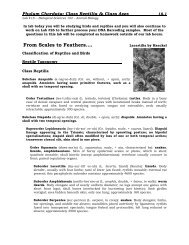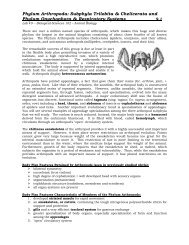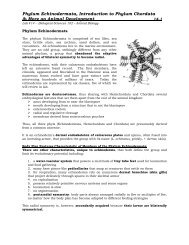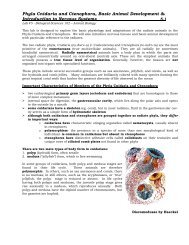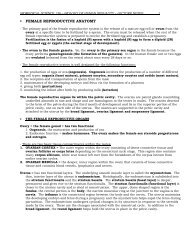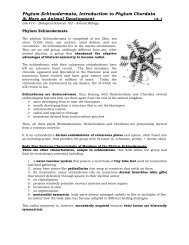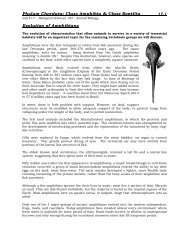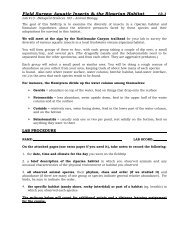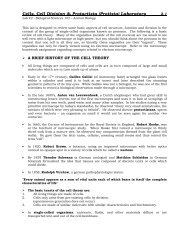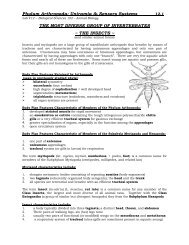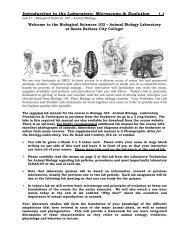Acoelomates: Phylum Platyhelminthes and Nemertea - Biosciweb.net
Acoelomates: Phylum Platyhelminthes and Nemertea - Biosciweb.net
Acoelomates: Phylum Platyhelminthes and Nemertea - Biosciweb.net
Create successful ePaper yourself
Turn your PDF publications into a flip-book with our unique Google optimized e-Paper software.
<strong>Acoelomates</strong>: <strong>Phylum</strong> <strong>Platyhelminthes</strong> <strong>and</strong> <strong>Nemertea</strong> <strong>and</strong><br />
Pseudocoelomates: Phyla Nematoda <strong>and</strong> Rotifera & Parasitism 6.14<br />
Lab #6 - Biological Sciences 102 – Animal Biology<br />
‣ Observation of an Example of Trematode Copulation<br />
‣ Draw the male <strong>and</strong> female Schistosoma mansoni in copulation from a prepared slide<br />
indicating which sex is which.<br />
‣ What aspect of their reproduction is unusual with respect to other trematode species?<br />
<strong>Phylum</strong> <strong>Platyhelminthes</strong><br />
Class Cestoda = tapeworms<br />
‣ Observe the specimens <strong>and</strong>/or diagrams of the<br />
species listed below.<br />
‣ Record the descriptive information requested at the<br />
end of the lab for this species.<br />
‣ one adult cestode tapeworm on display<br />
‣ Observation of Cestode Body Structures<br />
‣ Using a microscope <strong>and</strong> the preserved, prepared slides identify the following structures of<br />
cestodes.<br />
‣ Examine a prepared slide of a scolex (head) from a tapeworm such as Taenia sp. or<br />
Diplidium sp. .<br />
‣ Sketch <strong>and</strong> label the scolex. Label the four suckers, <strong>and</strong> the hooks.<br />
‣ Examine a slide of a gravid proglottid of a cestode. Note the following structures:<br />
(you do not need to draw this, but you should be able to identify these in a diagram)<br />
‣ nerve cords (as visible)<br />
male reproductive structures are not easily<br />
‣ excretory canals<br />
visible in a gravid proglottid<br />
‣ vagina/genital pore<br />
‣ Note how the ova are packed into the branched uterus<br />
‣ Roughly, how many eggs are their per gravid proglottid?<br />
(are there 10s, 100s, 1000s, millions of eggs per gravid proglottid?)



